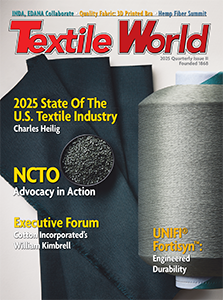GLEN ELLYN, Ill. — June 7, 2018 — The College of DuPage Robotics Team placed ninth in NASA’s ninth annual Robotic Mining Competition, beating out dozens of renowned four-year universities, including Colorado School of Mines, Illinois Institute of Technology, Milwaukee School of Engineering, Purdue, Texas A&M University and the University of Illinois Urbana-Champaign.
COD was one of only two community colleges at the competition, held last month at the Kennedy Space Center in Florida
For COD Engineering and Technology Club President Josie Suter, the most valuable lessons were gained during the months spent preparing for the competition.
“The competition experience was amazing,” Suter said. “Everyone on the team went above and beyond to make sure we were ready for our mining runs. However, the competition was only the tip of the iceberg. Most of the work happened during the months leading up to the competition. I couldn’t be more proud of my team who worked endless hours to make sure that we delivered an outstanding robot and impressive supplemental projects.”
During the competition, students from more than 40 schools performed a variety of challenges, including the abrasive characteristics of the basaltic regolith simulant, the weight and size limitations of the mining robot, and the ability to tele-operate it from a remote Mission Control Center. Scoring was based on autonomy, communications, dust tolerance and projection, power requirements, vehicle mass and other factors. Robots were required to mine gravel simulating icy Mars regolith located beneath approximately 30 cm of simulated Mars surface regolith. A minimum of 1 kg of mined gravel was required to score mining points. In addition, teams were required to submit an in-depth systems engineering report and a written description of engineering-related outreach undertaken by students.
Weighing in at 68 kilograms, 12 kilograms under the competition’s 80-kilogram limit, the team’s robot featured a six-inch diameter auger for digging, a bin to carry and transport the payload and a conveyor belt mechanism to dump the payload into the receptacle at the competition.
Remote control was achieved through a repurposed Xbox gaming console controller connected to a laptop and a Raspberry Pi transmitter. Since teams were required to control the robot from a NASA mission control center out of sight of the competition area, the robot featured fore, aft and overhead video cameras to allow for navigation. The robot also featured rear-wheel drive and pivot steering.
Suter, who has just completed COD’s Engineering Pathways program and will be transferring to the University of Illinois Urbana-Champaign College of Engineering this fall, credits the success of the team to the hard work and commitment of the team members in bringing a range of skills and expertise to the project.
“Our success in this competition is a direct result of the well-roundedness of our team,” she said. “In particular, I credit the unbelievable amount of effort, leadership, and technical experience of Peter Gutfeldt and Robert Beckwith. It was amazing how well they were able to handle our team throughout this project, which at other universities is often conducted by faculty as a senior design project. It’s truly amazing what those two were able to pull off as sophomores leading a team of sophomores and freshman.”
She said the competition provided a wealth of experience and benefits to the participants.
“By participating in this competition, we gained both technical and managerial experience,” Suter said. “The competition itself challenged our engineering skills with difficult problems to solve within specific constraints. Supplemental deliverables like the systems paper, outreach report and systems presentation pushed our team to organize our engineering process, develop our technical communication skills, and create lasting change in our community.
Posted June 7, 2018
Source: College of DuPage




